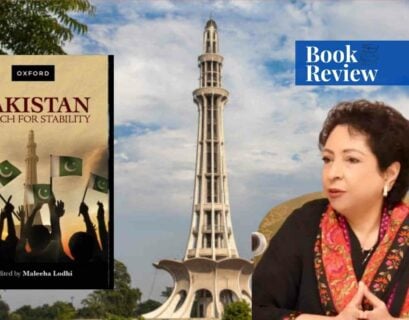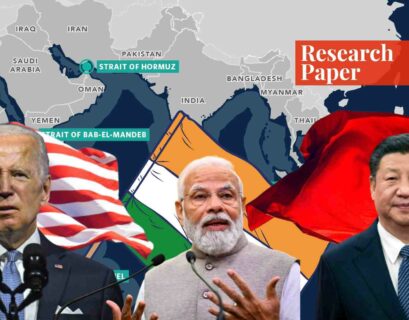Ms Huda Raza is studying International Relations at National Defense University, Islamabad.
The Conflict
The civil war in Somalia began in 1991, after Somalia lost to Ethiopia in the Ogaden conflict, in which Somalia claimed it was its territory because the USSR supported Ethiopia. Therefore, in January 1991, Somali military dictator Mohamed Siad Barre was overthrown in a military coup and forced to flee the country leaving the state with no central government because the Somali ethnic, political, and religious groups blamed Siad Barre for their defeat in the war.
The conflict did not end there, and the regional warlords began fighting with each other to take control of the country. Consequently, one of the worst famines in African history hit the country and thousands of people died from hunger and starvation. The United Nations paid heed to the plight of the Somalian people and in April 1992, the UN Security Council adopted resolution 751, which sent its humanitarian assistance to Somalia by establishing a United Nations Operation in Somalia (UNOSOM).
However, there was difficulty in delivering food to those who needed it because of various warlords fighting over food supplies. Later, in August 1992, the UN sent a peacekeeping mission to Somalia in which the US participated to send food, but the mission was unsuccessful due to the widespread violence and looting. So in November 1992, in a UN Security Council meeting, President Bush offered to send American combat troops to Somalia to protect aid workers.
Thus, the United Nations accepted this offer by passing UN resolution 794, which authorized the United States and other member states to use force to provide a safe environment for the distribution of humanitarian aid. Hence, on 9th December 1992, the US combat troops entered Somalia, marking the beginning of Operation Restore Hope.
Bush & Clinton’s Measures in Somalia
The United States has a long tradition of participating in global peacekeeping efforts, and the US-led Somalian intervention in 1992-94 was such an effort to save Somalis, which started purely for humanitarian relief purposes but ended in a bloody episode of the killing of 18 American soldiers.
President Bush in August 1992 launched Operation Provide Relief to feed millions of starving Somalis, in which 145,000 tons of food aid were sent to Somalia via airlift. However, the food supply did not reach its intended beneficiaries because of looting by armed gangs. So, in December, the Bush administration, upon UN Security Council authorization, decided to send 28,000 American troops to Somalia to provide security to aid workers.
Bush said that the purpose of this intervention was to “create a secure environment” for food supplies. He emphasized that this would not be an open-ended operation and that the American forces wouldn’t stay any longer than necessary. However, the political situation in the capital deteriorated significantly and there seemed no satisfactory end to Operation Restore Hope when President Bill Clinton came to power.
On taking office, Clinton ordered the number of US troops to be reduced by formally handing control of the mission to the United Nations. Moreover, the already deteriorating situation further escalated when 24 Pakistani troops were ambushed and killed by General Farrah Aidid’s militia. This incident forced the United Nations Security Council to pass a resolution, taking military action against General Mohamed Farrah Aidid.
Over the course of two months, US and UN forces attempted to capture Aidid several times but failed. On October 3, 1993, Aidid’s militia shot down two Black Hawk Helicopters thereby killing 18 American soldiers and wounding 84. Four days after the “Black Hawk Down incident”, President Bill Clinton withdrew all the US troops from Somalia, ending the mission upon mounting pressure from Congress. A year later, the UN also pulled out its forces from Somalia, leaving the country in the hands of tribal clans and warlords.
Just War Theory
The historical theory of “Just War” can be used to analyze the feasibility and military justification for intervening in Somalia. In general, this idea seeks to establish a set of criteria that can be used to determine whether a war, campaign, or occupation is “fair.” For active participation in military intervention in Somalia, the norms of the law of war must be carefully studied. The criteria are as follows and will be systematically examined in the context of Somalia.
Just Cause
Gareth Evans and Mohamed Sahnoun justified military intervention in the modern context of protection responsibility by analyzing the threshold of a just cause before the United Nations or, in exceptional cases, coalition intervention by independent states. According to Grotius’ philosophy, the just causes of war can be efficiently curtailed into three categories i.e., self-defense, protecting others from assault, and defending civilians from oppressive regimes and violence.
In the 21st century, this could include cases of “government collapse and population exposure to mass famine or civil war, such as in Somalia.” The Transitional Federal Government (TFG) can be defined, at least politically, as a legitimate authority, but the fundamental fact is that Somalia has no legitimate state control. The citizens are not threatened and repressed by a violent regime, but by many small tribes and armed militias.
Given the Somali government’s inability to protect its population from harm, the responsibility for the protection and “just cause” is fully met by an interventionist force. Prior to the responsibility of protection, refusing to acknowledge the need to intervene in a humanitarian crisis was sufficient to satisfy passivity. However, when a country explodes from within and can no longer protect its citizens, the principles of “just cause” are fully aligned with the guiding principles of protection responsibility.
Right Intention
A right intention is an aspect that is usually not provable by any useful legal evidence and is, therefore, an exception to international law as a condition. To ensure part of the right intention to settle in Somalia, a leading non-neighboring country must play a key role.
Any major intervention in Somalia would likely involve countries such as the United States, which is currently actively conducting counter-terrorism operations in the Horn of Africa, or NATO members similarly pursuing different goals, and ensuring this is very important. Importantly, the definition of “intention” for the states involved cannot really be based on logic or “just cause” behind it.
Last Resort
Intervention is permitted under the law of war only after taking other reasonable peaceful measures. Unfortunately, in the case of Somalia, many of the means of peaceful coercion in intergovernmental conflicts, such as diplomacy, negotiations, and sanctions simply do not exist or cannot be used.
One of the biggest problems for UNOSOM was trying to negotiate with warlords, militants, and politicians, and at the same time, reach an agreement on a ceasefire and subsequent comprehensive disarmament. Ironically, the small mediations that have taken place so far in Mogadishu were a direct result of the UN’s failure to find another solution.
The launch of the UN operation in Somalia was “the last resort” after the exhaustion of standard tools for resolving the conflict without military intervention. Given the lack of significant progress since the 1990s, the “last resort” criterion can and still is valid to justify military intervention.
Probability of Success
The possibility of successfully achieving the goals set in the framework of comprehensive humanitarian intervention envisaged only in the post-war period, such as peacekeeping, conflict resolution, disarmament, demobilization and reintegration (DDR), and humanitarian aid, is nothing.
With the killing of 24 Pakistani UNITAF peacekeepers in Mogadishu in 1993, and the subsequent “Battle of Mogadishu” on October 3 wherein 18 US troops and nearly 1,000 Somalis were killed, it is assumed that US Somali militias were invincible in using their military power to influence the conflict.
However, there are several mitigating factors in 1993 that could provide a valid counterargument to this assumption. In addition, the “probability of success” is the most important obstacle to be overcome in Somalia, where it is considered completely impossible, given the historical background of high-powered intervention.
Critical Analysis of Intervention & Response of International Community
May it be clan-based rivalry or mismanaged recurring interventions, both have ravaged Somalia. Although the first intervention in 1991 had morally motivated interventions, the later ones seem to be more politically motivated. Wrong approaches and mismanaged interventions combined with ill-timing were common and recurring features of the United Nations and the US’s interventions in Somalia.
If the ethical aspect of the intervention is analyzed independently, it shows some promising results. The UN’s first intervention in Somalia under mission UNISOM I & II was a complete failure because the timing and approaches were inappropriate.
Regarding the political aspect of interventions, Somalis are of the view that their country is being manipulated and that the international community does not want Somalia to stand on its feet. After thorough research, this view seems to hold some ground because Somalia is a bridge between the Middle East and Africa.
Conclusion & Way Forward
There are multiple aspects of humanitarian interventions in Somalia that must be viewed when analyzing the impact of an intervention. Highly contrasting political and moral motives shaped the outcome of the intervention and hence resulted in both the positive and the negative impacts of the intervention.
Since Somalia is not stable yet, and conflict among warlords still persists, this poses a serious challenge to Somalia’s future. Therefore, for the purpose of future security, proper mechanisms of direct and indirect socialization are required. Collaboration between the Somali diaspora and indigenous Somalis and the positive role of media are a few ways of much-needed critical socialization.
The efforts of the Somali diaspora can also persuade the international community to invest in socializing local Somali residents through education so that the stability of the country can be kept intact even if the US pulls back its unilateral effort.
If you want to submit your articles and/or research papers, please check the Submissions page.
The views and opinions expressed in this article/paper are the author’s own and do not necessarily reflect the editorial position of Paradigm Shift.



















